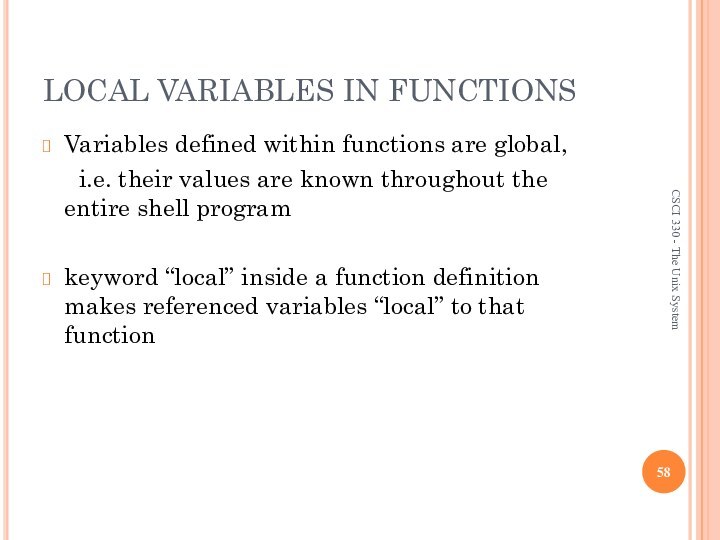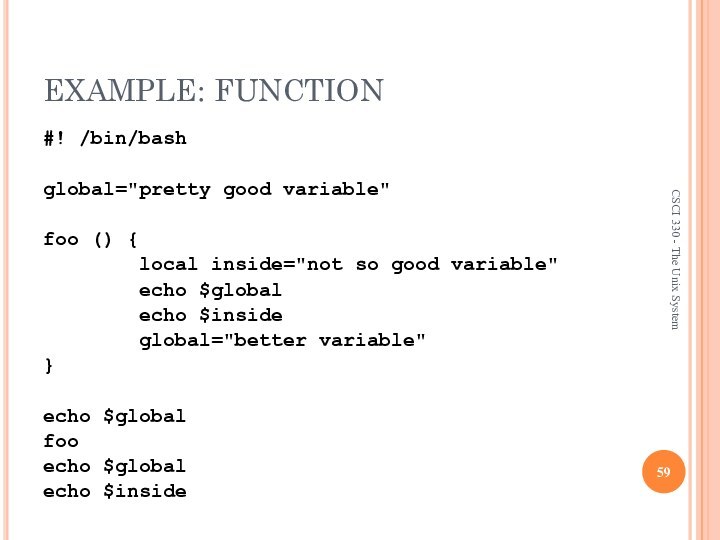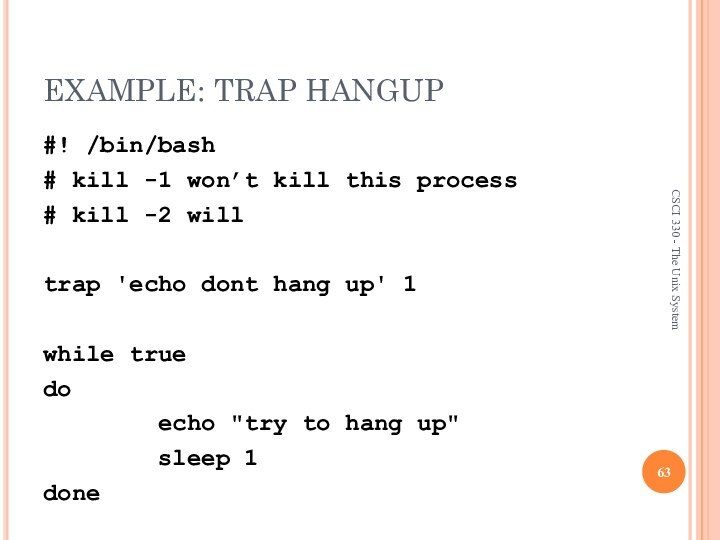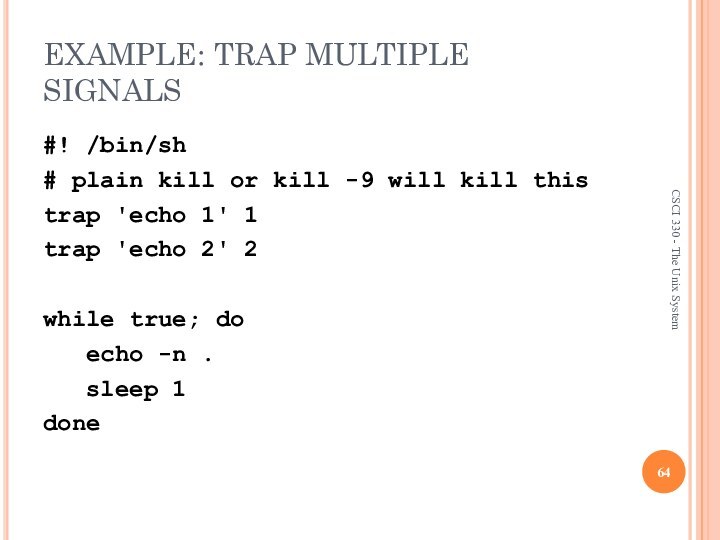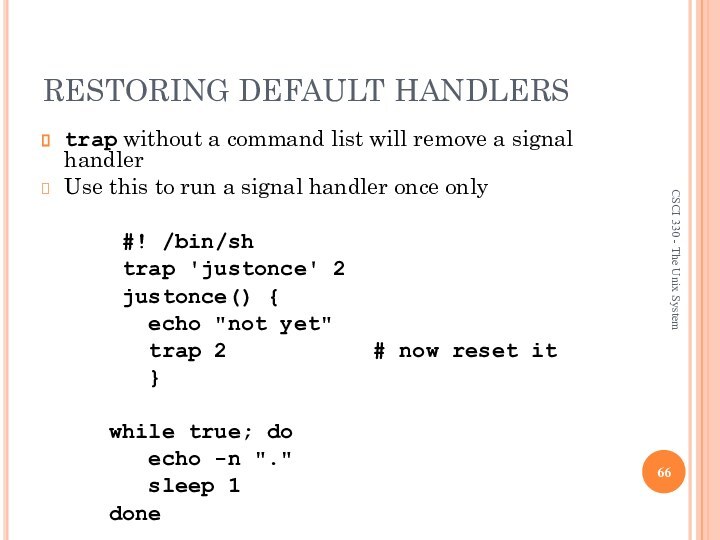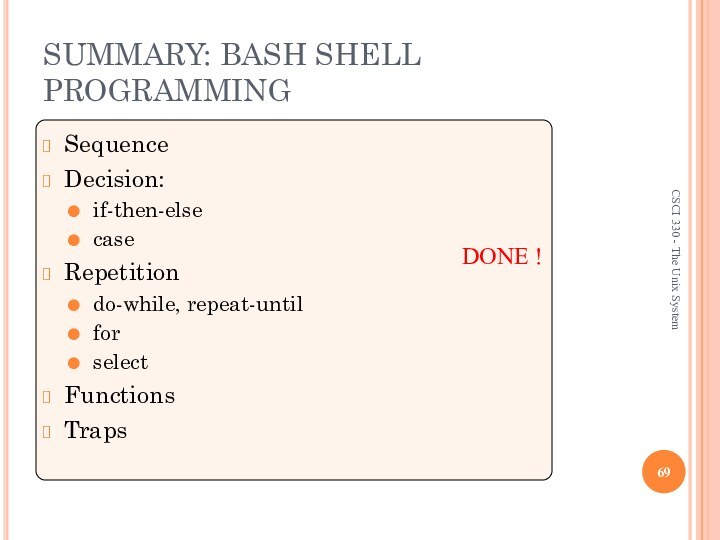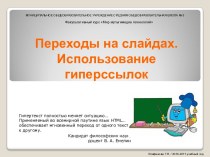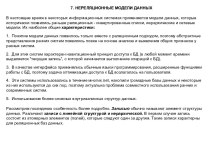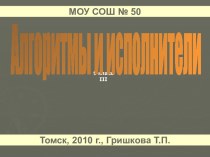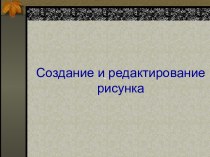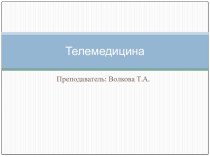2) SIGINT 3) SIGQUIT
4) SIGILL
5) SIGTRAP 6) SIGABRT 7) SIGBUS 8) SIGFPE
9) SIGKILL 10) SIGUSR1 11) SIGSEGV 12) SIGUSR2
13) SIGPIPE 14) SIGALRM 15) SIGTERM 16) SIGSTKFLT
17) SIGCHLD 18) SIGCONT 19) SIGSTOP 20) SIGTSTP
21) SIGTTIN 22) SIGTTOU 23) SIGURG 24) SIGXCPU
25) SIGXFSZ 26) SIGVTALRM 27) SIGPROF 28) SIGWINCH
29) SIGIO 30) SIGPWR 31) SIGSYS 34) SIGRTMIN
35) SIGRTMIN+1 36) SIGRTMIN+2 37) SIGRTMIN+3 38) SIGRTMIN+4
39) SIGRTMIN+5 40) SIGRTMIN+6 41) SIGRTMIN+7 42) SIGRTMIN+8
43) SIGRTMIN+9 44) SIGRTMIN+10 45) SIGRTMIN+11 46) SIGRTMIN+12
47) SIGRTMIN+13 48) SIGRTMIN+14 49) SIGRTMIN+15 50) SIGRTMAX-14
51) SIGRTMAX-13 52) SIGRTMAX-12 53) SIGRTMAX-11 54) SIGRTMAX-10
55) SIGRTMAX-9 56) SIGRTMAX-8 57) SIGRTMAX-7 58) SIGRTMAX-6
59) SIGRTMAX-5 60) SIGRTMAX-4 61) SIGRTMAX-3 62) SIGRTMAX-2
63) SIGRTMAX-1 64) SIGRTMAX
^C is 2 - SIGINT
CSCI 330 - The Unix System
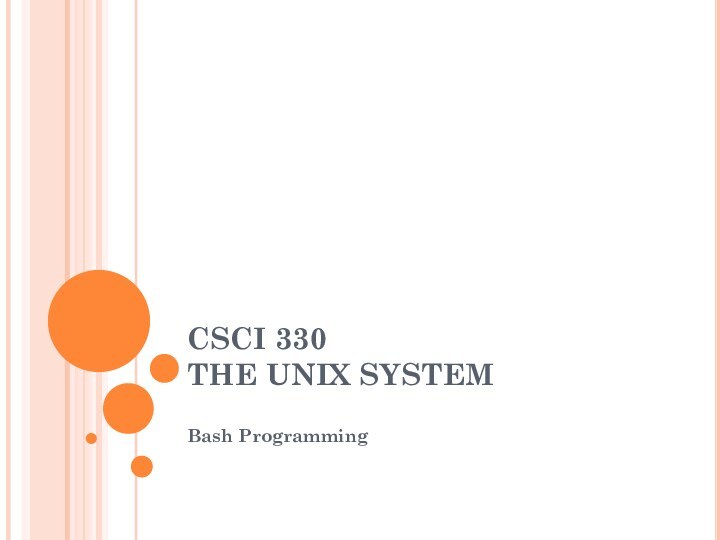
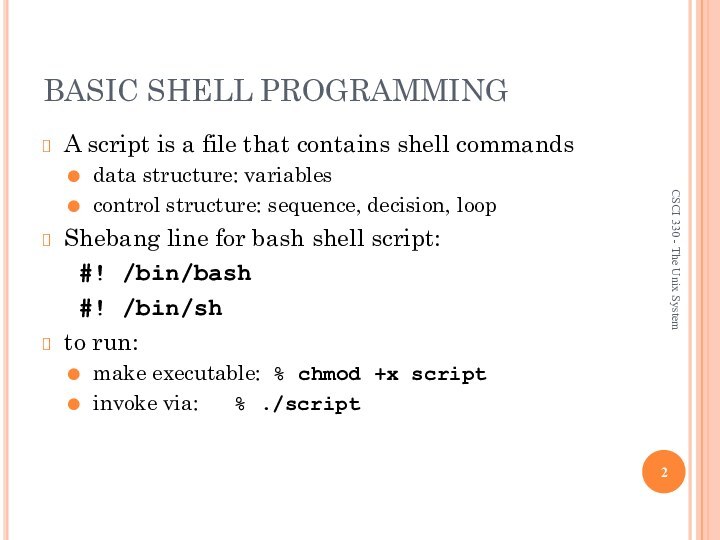

![Bash programming. CSCI 330 the unix system USER INPUTshell allows to prompt for user inputSyntax:read varname [more vars]orread –p](/img/tmb/15/1465850/6469e3151d56cf7d3b0aaeca3d21143c-720x.jpg)
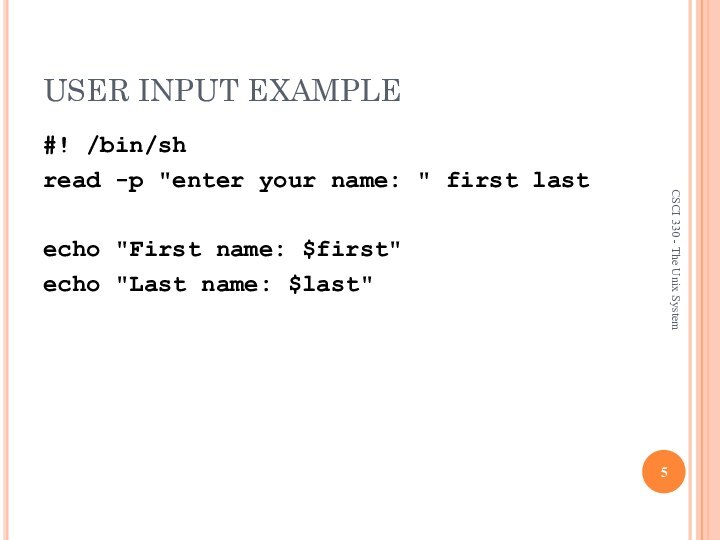
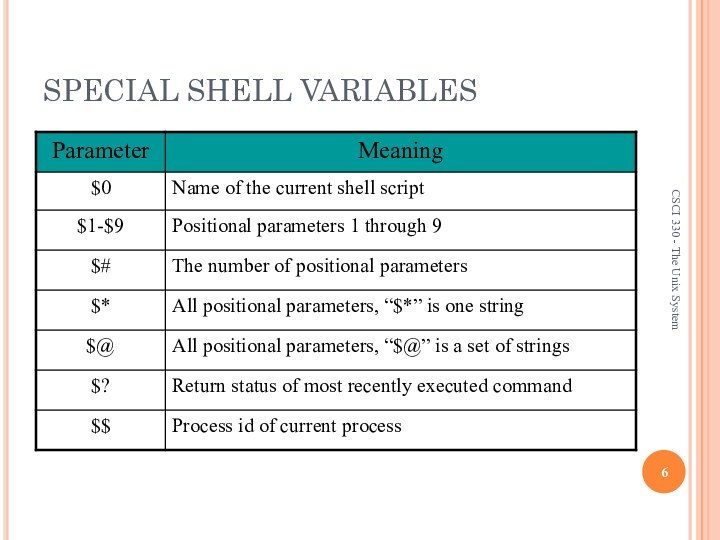

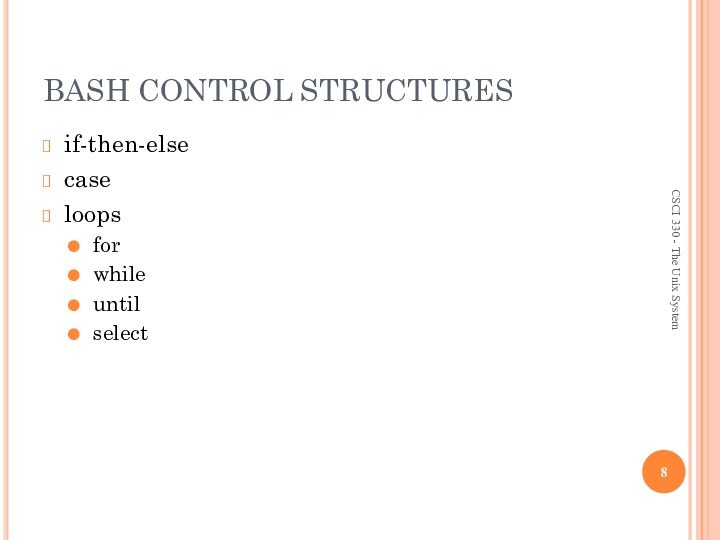
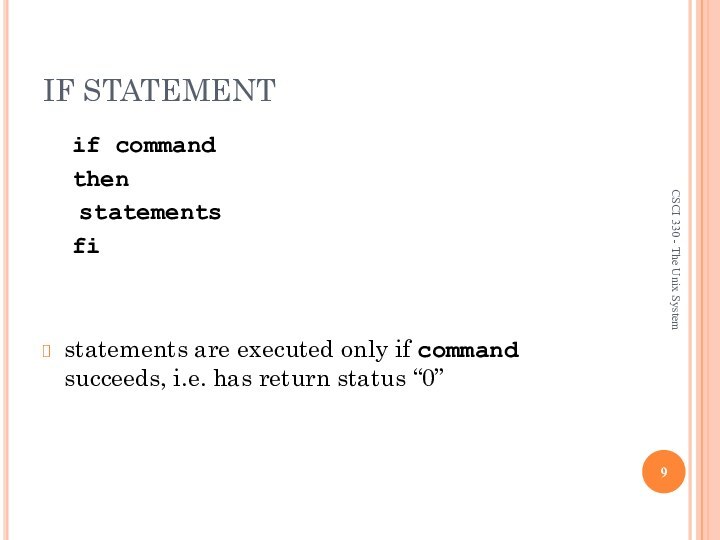
![Bash programming. CSCI 330 the unix system TEST COMMANDSyntax: test expression [ expression ]evaluates ‘expression’ and returns true or falseExample: if](/img/tmb/15/1465850/efe3f9c59cf3b1e93f29694cc862073f-720x.jpg)
![Bash programming. CSCI 330 the unix system THE SIMPLE IF STATEMENTif [ condition ]; then statementsfiexecutes the statements only if](/img/tmb/15/1465850/84365c8ccc728bd2e40d73c4a411db77-720x.jpg)
![Bash programming. CSCI 330 the unix system THE IF-THEN-ELSE STATEMENTif [ condition ]; then statements-1else statements-2fiexecutes statements-1 if condition is](/img/tmb/15/1465850/e8917ecc7e328a7b2216b9c8204dbb2c-720x.jpg)
![Bash programming. CSCI 330 the unix system THE IF…STATEMENTif [ condition ]; then statementselif [ condition ]; then](/img/tmb/15/1465850/7354d1521aa9ba8c45c824e59987bc54-720x.jpg)

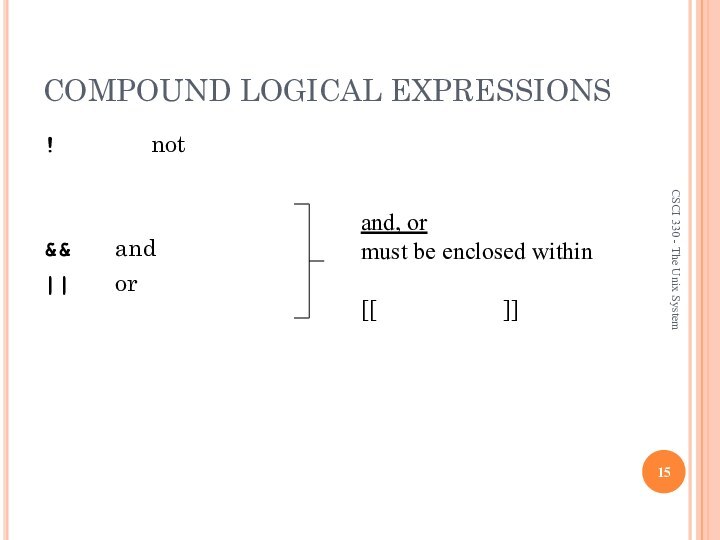
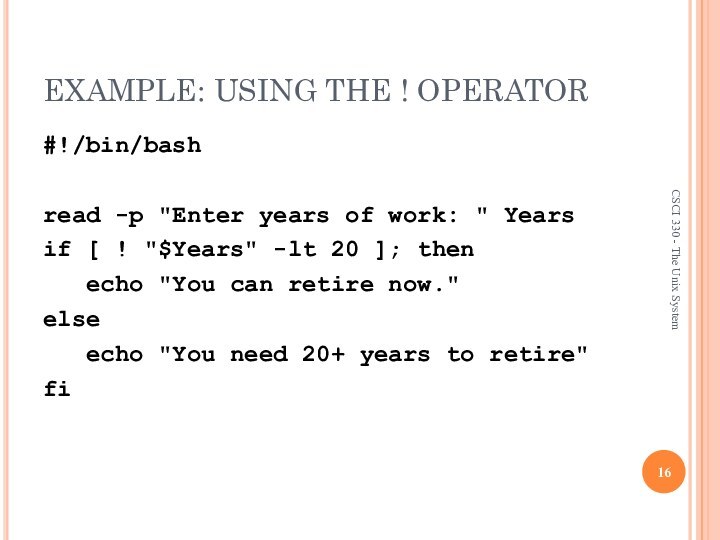
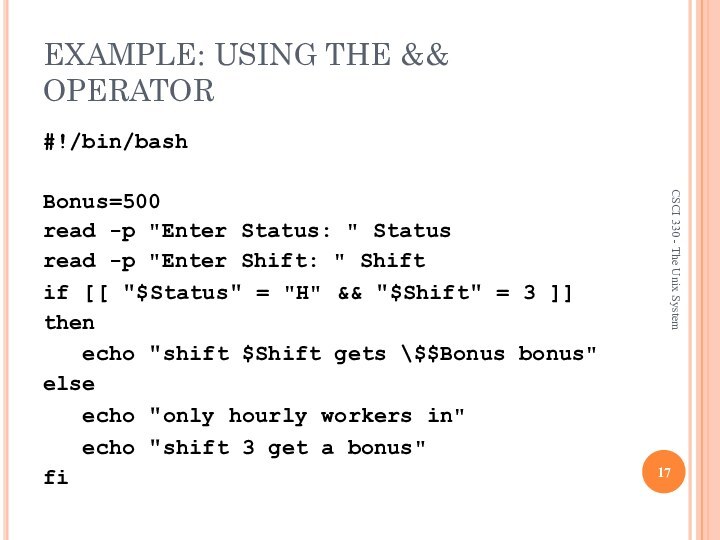



![Bash programming. CSCI 330 the unix system EXAMPLE: FILE TESTING#! /bin/bashif [ $# -lt 1 ]; then](/img/tmb/15/1465850/9af3d5a4e1d652227c00eaff28e9e256-720x.jpg)



![Bash programming. CSCI 330 the unix system CASE PATTERNchecked against word for matchmay also contain: * ? [ … ] [:class:]multiple patterns can](/img/tmb/15/1465850/0187b573969feeb6d6171487bbb2c87a-720x.jpg)

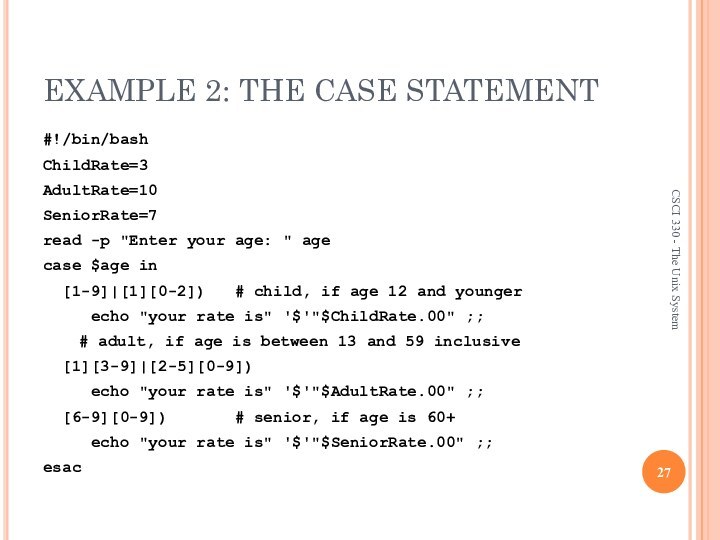
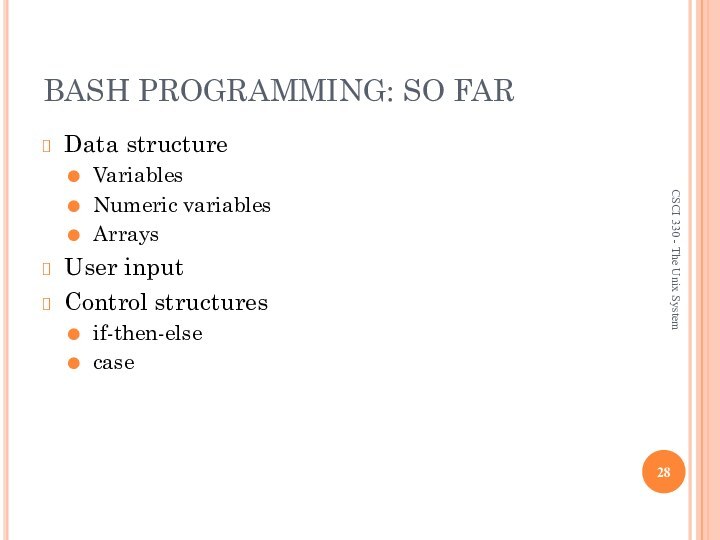



![Bash programming. CSCI 330 the unix system EXAMPLE: USING THE WHILE LOOP#!/bin/bash COUNTER=0 while [ $COUNTER -lt 10 ]](/img/tmb/15/1465850/fd7434d78213283d34c7c738ef1f1369-720x.jpg)

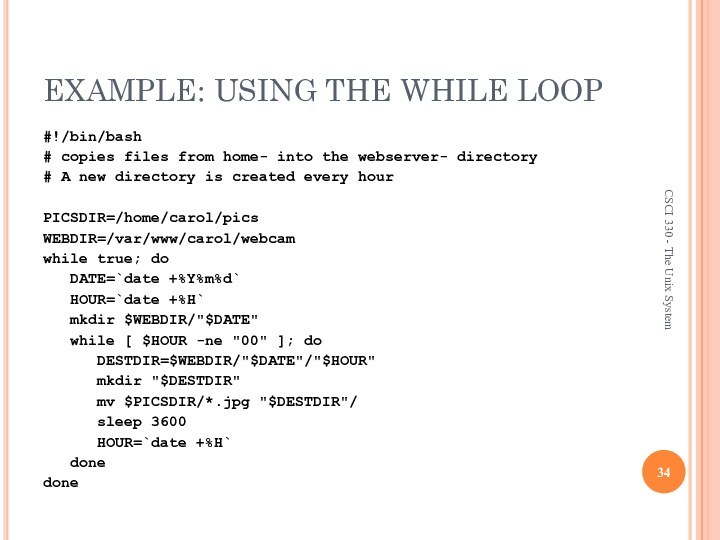

![Bash programming. CSCI 330 the unix system EXAMPLE: USING THE UNTIL LOOP#!/bin/bash COUNTER=20 until [ $COUNTER -lt 10 ]](/img/tmb/15/1465850/46abb6049046dba54efffd0e7a3a8954-720x.jpg)
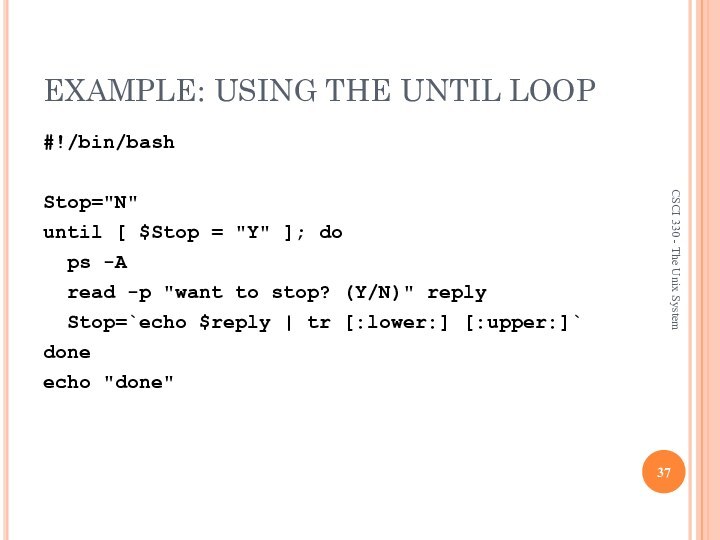

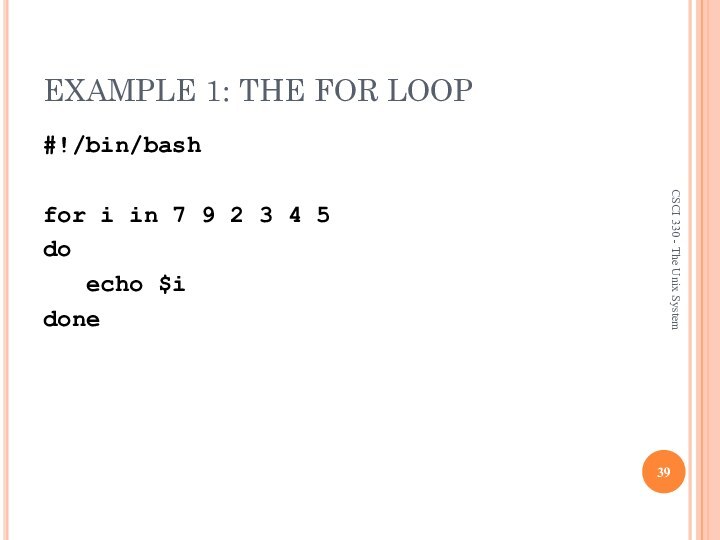

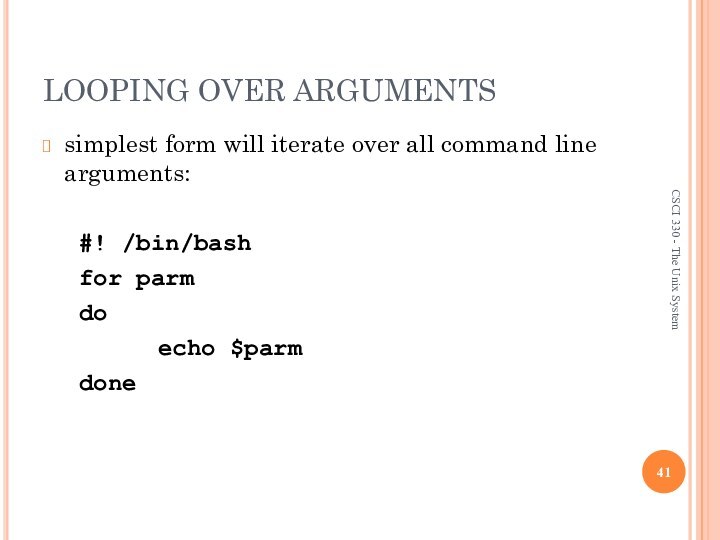
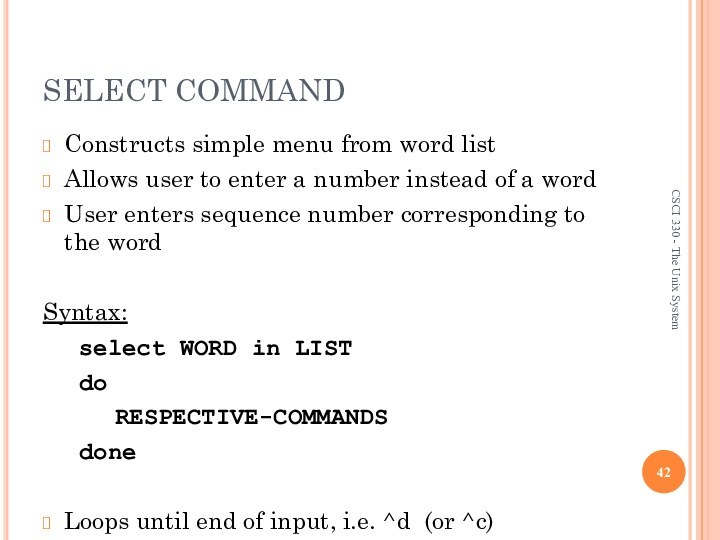
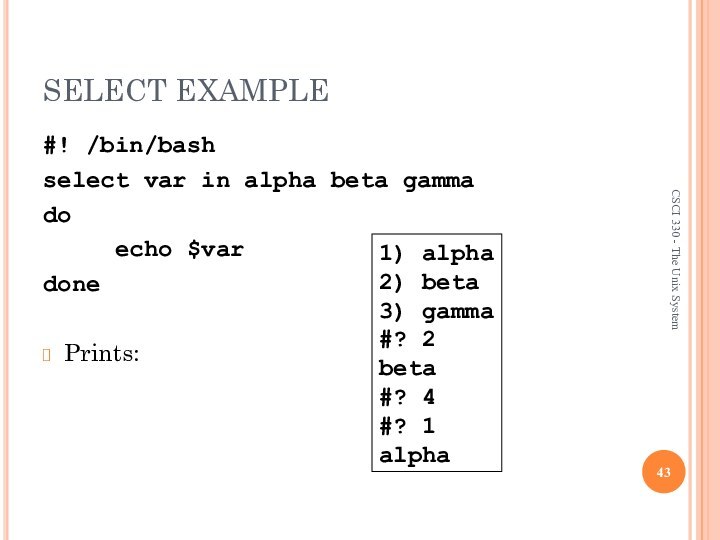
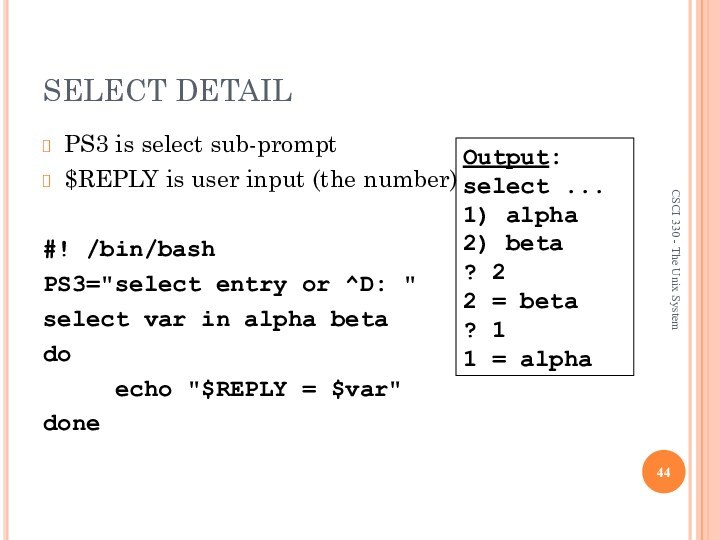


![Bash programming. CSCI 330 the unix system THE BREAK COMMANDwhile [ condition ]do cmd-1 break cmd-ndoneecho](/img/tmb/15/1465850/14df13da64a336fe0c41a2e71193f6a1-720x.jpg)
![Bash programming. CSCI 330 the unix system THE CONTINUE COMMANDwhile [ condition ]do cmd-1 continue cmd-ndoneecho](/img/tmb/15/1465850/a177245cdd6bbe009f7d7fb762896525-720x.jpg)

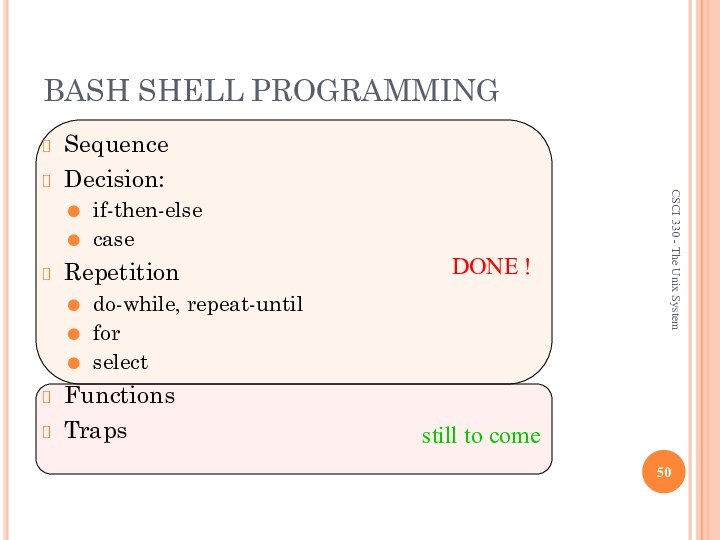
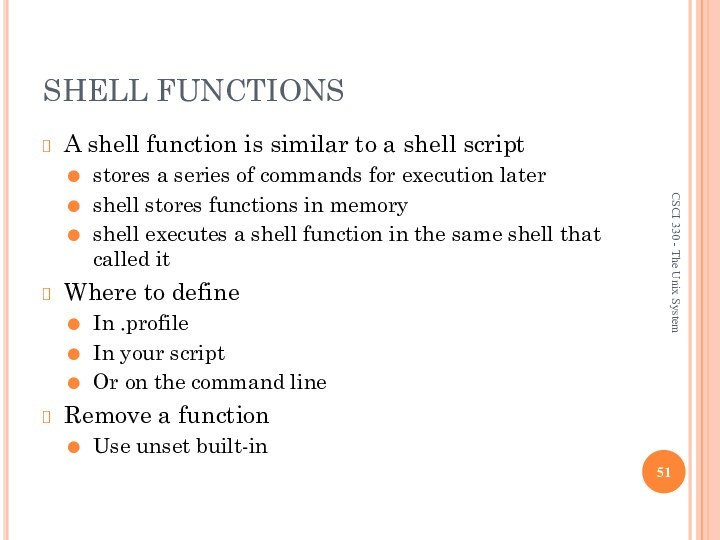

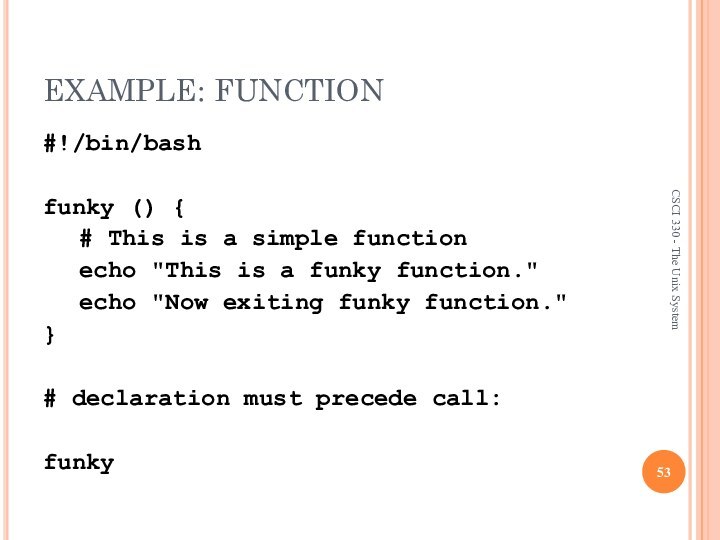
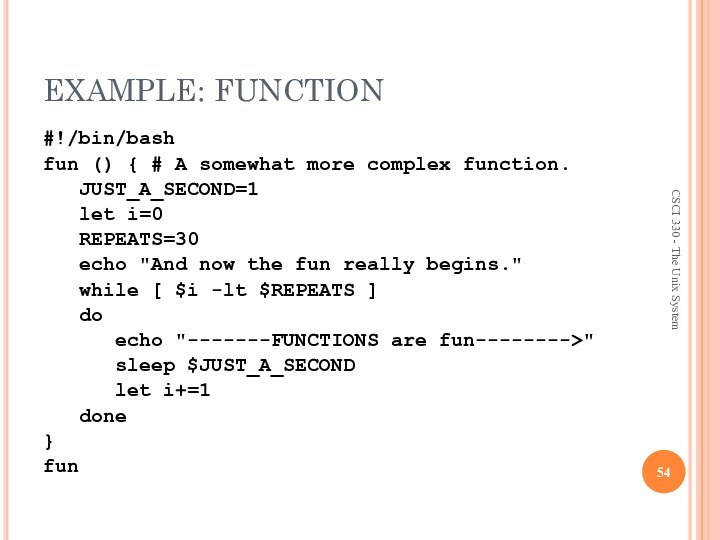
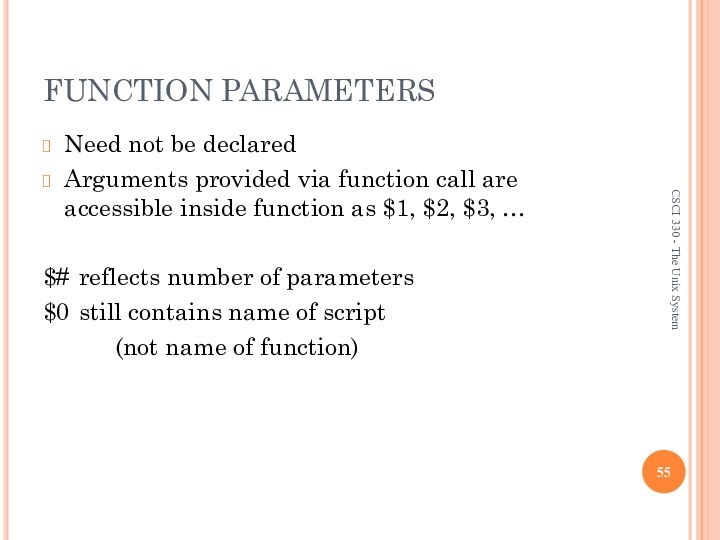
![Bash programming. CSCI 330 the unix system EXAMPLE: FUNCTION WITH PARAMETER#! /bin/shtestfile() { if [ $# -gt 0 ];](/img/tmb/15/1465850/0a384170b7fe7ff6c1bf371f0c36089f-720x.jpg)

